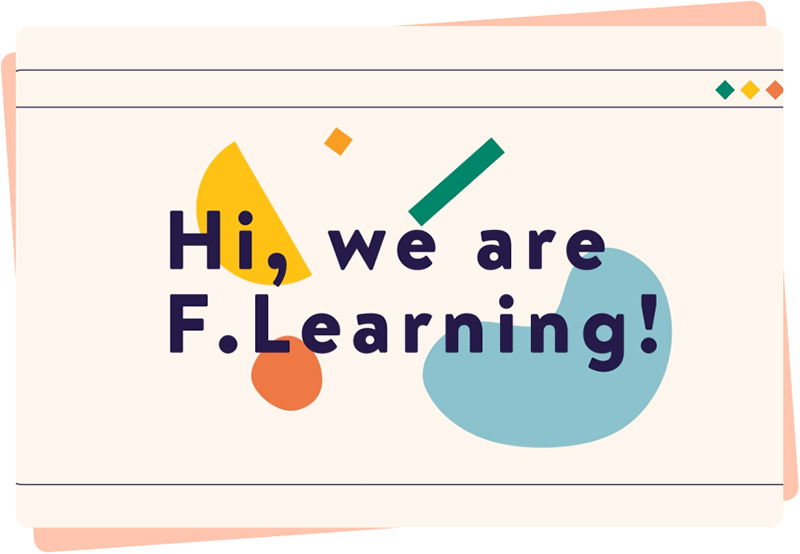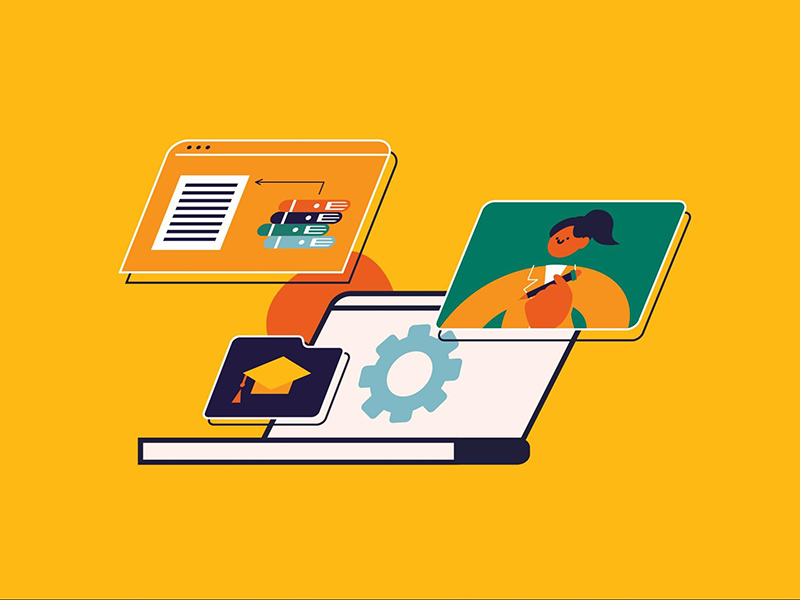Customer service eLearning is a powerful tool to enhance your team’s skills and performance. This article explores the top 4 benefits, key moments when eLearning is crucial, and a step-by-step approach to creating effective training programs. Additionally, discover four outstanding examples of customer service eLearning platforms that can transform your customer service strategy.
6 Outstanding Benefits of Customer Service eLearning
Investing in customer service eLearning brings a host of benefits that can significantly impact your business. Here are six key advantages that highlight why eLearning is essential for developing a top-tier customer service team.
- Increased Profit: Effective customer service training enhances employee performance, leading to improved customer experiences. This directly contributes to higher sales and increased profitability.
- Improved Employee Motivation and Engagement: eLearning empowers employees with the skills they need, boosting their confidence and engagement. Motivated employees are more likely to provide exceptional customer service.
- Increased Customer Satisfaction, Loyalty, and Retention: Skilled customer service representatives create positive interactions, increasing customer satisfaction. Satisfied customers are more likely to remain loyal and continue doing business with your company.
- Drop-In Employee Turnover Rates: Investing in employee development through eLearning shows commitment to their growth. This reduces turnover by fostering job satisfaction and career advancement opportunities.
- Saves Productive Time: eLearning allows employees to access training at their convenience, reducing disruptions to daily operations. This flexibility ensures that learning does not interfere with productivity.
- Enhanced Brand Image: A well-trained customer service team reflects positively on your brand, showing professionalism and reliability. This strengthens your brand’s reputation in the marketplace.
4 Key Times Your Business Needs Customer Service eLearning
To maintain a high-performing customer service team, it’s crucial to know when to implement targeted eLearning programs.
- New hire onboarding: eLearning ensures that new employees quickly get up to speed on customer service standards, providing a consistent foundation from the start.
- Scheduled regular training: Regular eLearning sessions keep your team updated on the latest customer service practices, maintaining high performance across the board.
- Addressing customer service pain points: Targeted eLearning helps address specific customer service challenges, improving problem-solving and customer interactions.
- Product knowledge training: eLearning equips your team with in-depth product knowledge, enabling them to provide accurate information and better service to customers.

TOP 4 Examples of Custom Service eLearning Solutions
Below are four effective examples of custom service eLearning solutions that enhance learner engagement and skill development.
| Example | Description | Benefits |
| Interactive Scenarios | Allow learners to engage in realistic customer interactions, making decisions that affect the outcome. For instance, handling a complaint where choices lead to different customer reactions. | Enhances decision-making skills and provides practical experience. |
| Role-Playing Activities | Practice customer service skills through role-playing exercises, either in person or via simulations. Helps in developing empathy and communication skills. | Builds empathy and improves communication through practice. |
| Video Demonstrations | Short videos showcasing best practices in customer service, including effective communication techniques or handling difficult situations. | Provides visual and practical examples of best practices. |
| Gamified Learning Modules | Incorporates game elements, such as quizzes or challenges, where learners earn points for correctly answering questions about customer service policies. | Increases engagement and motivation through interactive learning. |
TOP 5 Best Providers of Customer Service eLearning
Let’s look at the leading providers of customer service eLearning in 2024 that we gather for your reference.
| Example | Description | Key Features | Benefits |
| Canity | Offers comprehensive customer service training focused exclusively on this field. | Short, engaging video lessons, quizzes, and assessments | Specializes in customer service with industry-relevant training. |
| CSIA (Customer Service Institute of America | Provides professional certification in customer service excellence. | Accredited courses, real-world scenarios, expert insights | Recognized certification, enhances career prospects in customer service. |
| The Training Bank | Specializes in customer service training through eLearning, focusing on developing soft skills. | Interactive modules, video lessons, and practical exercises | Enhances customer service soft skills, leading to improved customer interactions. |
| Udemy Customer Service Courses | A diverse range of courses focusing on customer service skills. | Video lectures, quizzes, real-world scenarios | Flexible learning, broad topic coverage, and practical exercises. |
| Coursera Customer Service Courses | University-level courses on customer service skills and management. | Peer-reviewed assignments, expert lectures, certificates | High-quality education, academic rigor, and certification options. |
8 Step-by-step Guide for Creating Effective Customer Service eLearning
Creating an effective customer service eLearning program might seem daunting, but with the right approach, it can be a smooth and enjoyable process.
1. Define Learning Objectives
Before you start creating content, you need to know exactly what you want your employees to learn. For example, if your goal is to improve conflict resolution skills, your learning objectives might include understanding different conflict styles, mastering de-escalation techniques, and practicing active listening.
Clearly defined objectives give your course a purpose and provide a benchmark to measure its success. Use the SMART criteria (Specific, Measurable, Achievable, Relevant, Time-bound) to ensure your objectives are precise and actionable. For instance, “By the end of this course, participants will be able to resolve customer complaints with a 90% satisfaction rate.”

2. Develop Engaging Content
Creating engaging content is key to maintaining learner interest and ensuring the material sticks. Start by diversifying your content types: mix traditional text-based modules with videos, infographics, and case studies.
For instance, you might include a video demonstrating a successful customer service interaction, followed by a quiz to reinforce the key points. Storytelling is another powerful tool-use real-life scenarios that your employees might face to make the content relatable and practical. Break up long sections of text with interactive elements like clickable tabs or drag-and-drop activities to keep learners actively involved.
3. Choose the Right eLearning Tools
Selecting the right tools for eLearning program is crucial for both content delivery and user experience. Consider the following criteria: ease of use, compatibility with your existing systems, and the ability to support multimedia content. If you need interactivity, look for platforms that offer features like quizzes, simulations, and gamification.
For example, an LMS (Learning Management System) like Moodle or TalentLMS could be ideal for tracking learner progress, while tools like Articulate Storyline or Adobe Captivate are great for creating interactive content. The key is to match the tool to your specific needs and the skills of your learners.
4. Design User-Friendly Interfaces
Even the most engaging content can fall flat if your learners struggle to navigate the platform. A clean, intuitive interface is essential. Start by organizing your course in a logical flow-introductory modules should be followed by more advanced topics.
Use consistent layouts and clear headings to guide learners through the material. For instance, a progress bar can help learners track their journey, while a well-placed “Help” button ensures they can get assistance without frustration. Test the interface with a small group before full deployment to identify and fix any usability issues.
5. Implement Interactive Elements
Interactive elements transform passive learning into an active experience. Consider incorporating role-playing scenarios where learners must choose how to respond to a difficult customer, with immediate feedback provided based on their choices. Simulations can also be powerful, allowing learners to practice skills in a safe, controlled environment.
For example, a virtual customer service desk where learners handle different customer inquiries can make the training more immersive. Gamification—such as earning badges for completing modules—can further motivate learners and add a fun, competitive edge to the learning process.

6. Provide Ongoing Support and Resources
Learning doesn’t stop when the course ends. Provide your team with additional resources to reinforce what they’ve learned, such as quick-reference guides, FAQs, or access to discussion forums where they can share experiences and ask questions.
For example, you could create a knowledge base with articles on common customer service issues and how to handle them. Offering one-on-one coaching sessions for those who need extra help can also be beneficial. Continuous support ensures that learning is not just a one-time event but an ongoing process that keeps skills fresh and relevant.
7. Evaluate and Revise
After your eLearning course is live, it’s time to assess its effectiveness. Collect data through surveys, quizzes, and feedback forms to understand what’s working and what’s not. For example, if a significant number of learners are scoring low on a particular quiz, it may indicate that the related content needs to be revised for clarity.
Additionally, track customer service metrics before and after the training to see if there’s a noticeable improvement. Regularly revisiting and updating the course content ensures that it remains relevant and effective as your business needs evolve.
8. Monitor and Track Progress
Continuous monitoring of learner progress is crucial to ensure your training program achieves its goals. Use your LMS to track metrics such as course completion rates, assessment scores, and time spent on each module.
For example, if you notice that learners are consistently spending too much time on a particular section, it might be too challenging or confusing, and you may need to simplify or better explain the material. Regular progress reports can also help identify top performers and those who may need additional support, allowing you to tailor follow-up training as needed.
Poorly designed customer service eLearning can have serious consequences for your business. If the training is boring, difficult to navigate, or irrelevant to your employees’ real-world challenges, it can lead to disengagement and frustration. Therefore, to avoid these pitfalls, it’s wise to hire a professional studio that specializes in custom eLearning development.
They can create a tailored program that meets your specific needs, ensuring your team is not only well-trained but also motivated to provide exceptional customer service. This investment pays off in happier customers, more engaged employees, and a stronger bottom line.
Need expert support to align your training goals with the right learning solution? Explore our curated list of eLearning consulting services to choose a trusted partner.
Why F.Learning Studio is Your Perfect Match for Customer Service eLearning Development
Tailored Content for Maximum Impact
F.Learning Studio specializes in crafting customized eLearning modules that address your specific customer service challenges and goals. By aligning content with your company’s unique needs, we ensure that training is relevant and impactful, leading to better employee performance and customer interactions.
Our top-tier services:
- Learning Design: We develop engaging customer service eLearning experiences tailored to your specific goals, ensuring that each course aligns with your unique training needs.
- Video Production: Our team creates high-quality, visually appealing videos to enhance your customer service eLearning, making complex concepts clearer and more engaging.
- Interactive Design: We incorporate interactive elements into your customer service eLearning, using advanced technology to foster dynamic and immersive learning environments that boost engagement and retention.
- Graphic Design: Our graphic design services include custom visuals that enhance the aesthetic of your customer service eLearning materials and support effective content delivery.
INTERESTED TO KNOW MORE?
Book a free consultation with us to explore how to kick start your Custom Service eLearning Project!
Professional Knowledge and Technical Skills
At F.Learning Studio, our team is composed of experts with deep knowledge and technical skills in eLearning development. From learning designers and video producers to interactive and graphic designers, our professionals are equipped to handle any challenge. Whether you need a simple course or a complex, interactive learning experience, F.Learning Studio has the skills and experience to deliver exceptional results.
Comprehensive Support and Feedback
F.Learning Studio provides ongoing support and feedback to help you continuously improve your training programs. Our commitment to customer success means they work closely with you to gather feedback, measure training effectiveness, and make necessary adjustments to keep your team at the top of their game.

Conclusion
Customer service eLearning is a powerful tool that can transform your team’s ability to deliver exceptional customer experiences. By carefully designing and implementing an effective eLearning program, you can boost employee engagement, improve customer satisfaction, and ultimately drive business success.
However, creating impactful training requires expertise and attention to detail. That’s where F.Learning Studio comes in. With our custom eLearning solutions, we can help you develop a tailored training program that meets your unique needs, ensuring your team is well-equipped to provide top-notch customer service. Ready to elevate your customer service training?
Please don’t hesitate to contact us now so we can offer what works best for your project.
- Email: [email protected]
- Fanpage: https://www.facebook.com/f.learningstudio
- Website: https://flearningstudio.com/
- LinkedIn: https://www.linkedin.com/company/f-learning-studio/
Get the best values
for your project
See how much your project might cost at F.Learning Studio!













